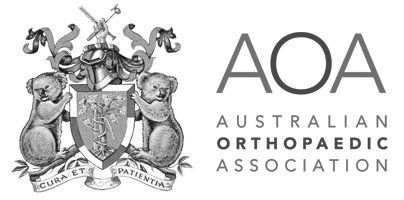What are Bunions & Bunionettes
Bunions and bunionettes are medical disorders of the feet and one of the most common reasons for painful toes. A bunion is a bony protuberance that appears on the external surface of the big toe when it angles toward the adjacent toe. It is an extra bone and a fluid-filled sac that grows at the base of the big toe.
A misalignment of the bones in the feet resulting in a bony bump on the base of the big toe is known as a bunion, and a bunionette if it occurs on the base of the little toe.
These conditions can become extremely painful over a long period of time.
Who do Bunions & Bunionettes Affect?
Bunions are more commonly occurring than bunionettes. They can affect anybody wearing improper shoes, people who are more likely to have arthritis and those having an inherited structural deficiency.
Almost half of the women in Australia suffer from bunions, along with 25% of the men. They are more commonly found in elderly people over the age of 60.
How do Bunions & Bunionettes Occur?
Bunions most commonly occur due to external pressure that forces the big toe to fold over the smaller toes, turning inward.
This results in the joint becoming larger and projecting outwards, resulting in the bunion formation.
Bunionettes are also known as ‘tailor’s bunion’. They were named since they occurred most commonly to tailors sitting cross-legged for long durations, with the little toes being rubbed against the ground.
Causes of Bunions & Bunionettes
Bunions are common in women and tend to run in families (heredity). The major cause of bunions is prolonged wearing of ill-fitting shoes like tight, narrow, and high-heeled shoes which compress the toes and exerts excessive pressure while walking. The condition gets worsen and more painful as the bump grows bigger in size. Certain conditions such as rheumatoid arthritis and gout may also cause bunions.
Causes of bunions and bunionettes include:
- Wearing high heeled, pointy or narrow shoes that result in toes being pushed together,
- Inherited structural defects,
- Foot injuries,
- Arthritis, and
- Misalignment of the bones in the feet.
Symptoms of Bunions & Bunionettes
The symptoms include:
- Bony projection jutting outwards at the base of the joint of either the big toe or the little toe,
- Tenderness and pain on touching or wearing shoes that are too tight,
- Inflammation or redness around the affected joint
- Change in the shape of the foot
- A bony mass at the joint surface of the big toe
- Pain and discomfort while walking
- Restricted movements of big toe
Stages of Bunions & Bunionettes
With time and continued use of narrow uncomfortable shoes, both bunions and bunionettes can become increasingly painful over time.
How are Bunions & Bunionettes Diagnosed?
The diagnosis for bunions and bunionettes is made by visual inspection of the feet and taking history.
Further diagnosis may include an X-Ray of the foot to identify the cause of the bunion, determine its severity and plan treatment.
Your orthopaedic surgeon diagnoses a bunion based on the following:
- Medical history to rule out any diabetic conditions, hypertension, circulatory disorders
- Physical examination to evaluate the nature of bunion
- Foot or ankle X-rays to determine the bone and soft tissue damage
How are Bunions & Bunionettes Treated?
Bunions and bunionettes once formed, are permanent unless surgically removed.
Some non-surgical options that can be recommended for pain relief include:
- Wearing roomier and more comfortable shoes,
- Using icepacks to reduce pain and swelling,
- Over the counter pain medications,
- Using bunion pads or taping the foot back into a more natural position, and
- Steroid injections to alleviate pain and swelling.
In case the conservative approach still does not result in pain relief, surgery can be recommended as an option. This involves either:
- the removal of part of the bony projection or swollen tissue from the joint, or
- fusing the bones of the affected joint to a better position permanently.
The full recovery from a surgical procedure can take a few weeks to a few months.
Bunions & Bunionettes Surgery
The surgical method of removal or excision of a bunion is known as Bunionectomy. The goal of bunion surgery is to relieve pain and restore the normal position and function of the big toe.
- Akin Osteotomy
- Chevron osteotomy
- Scarf Osteotomy
Some of the surgical complications include infection, blood clot formation, recurrence of the bunion, damage to nerves, bleeding, and unrelieved pain.
Prognosis of Bunions & Bunionettes
Always try to take care of the bunion at the initial stage by wearing accommodative shoes. In very few cases, post-surgical complications may interrupt the healing of the bunion. If left untreated it may cause bursitis, gait abnormalities, arthritis and other serious health problems.
Prevention of Bunions & Bunionettes
Avoid wearing poorly fitted shoes to prevent irritation and compression of the toes which may lead to the growth of a bunion.
If Bunions & Bunionettes are Untreated
If left untreated, bunions and bunionettes can become increasingly painful over time.
Complications can include
- bursitis (fluid-filled pad formation in the joints),
- hammertoe formation, and
- metatarsalgia (tenderness and swelling in the ball of the foot).





